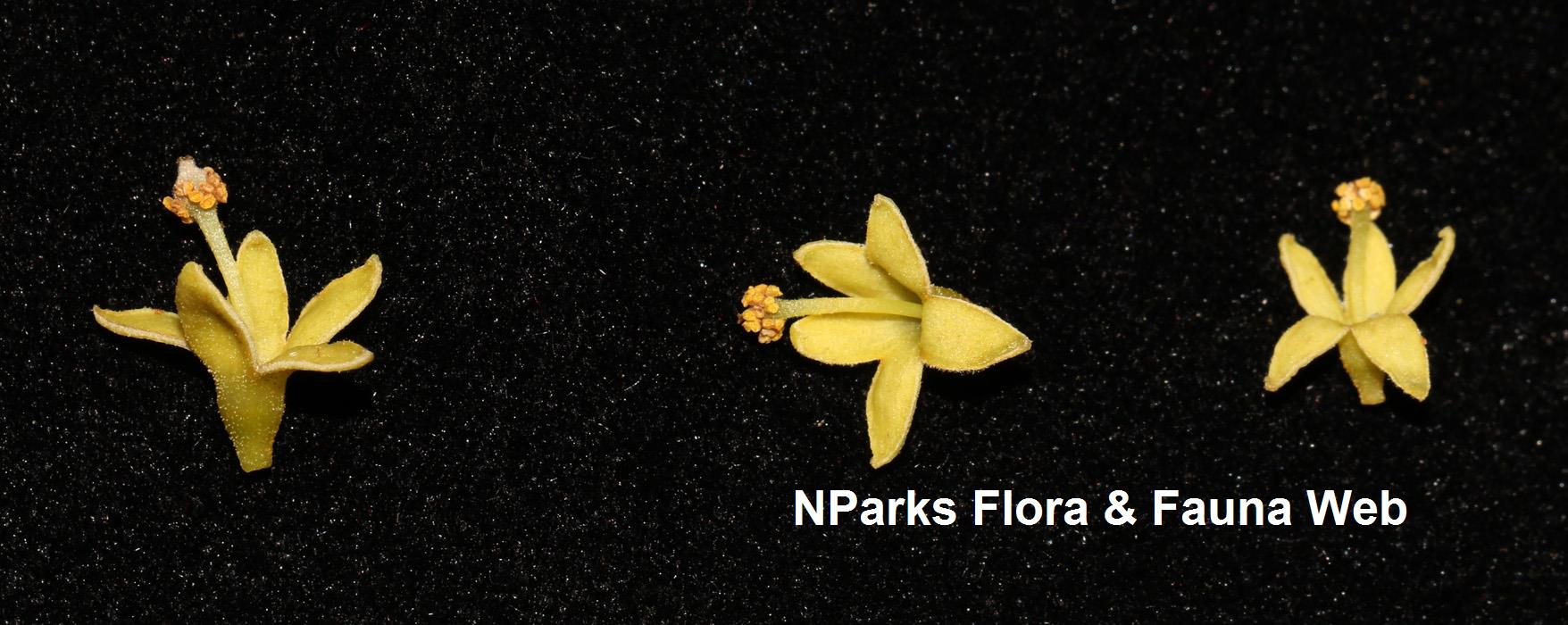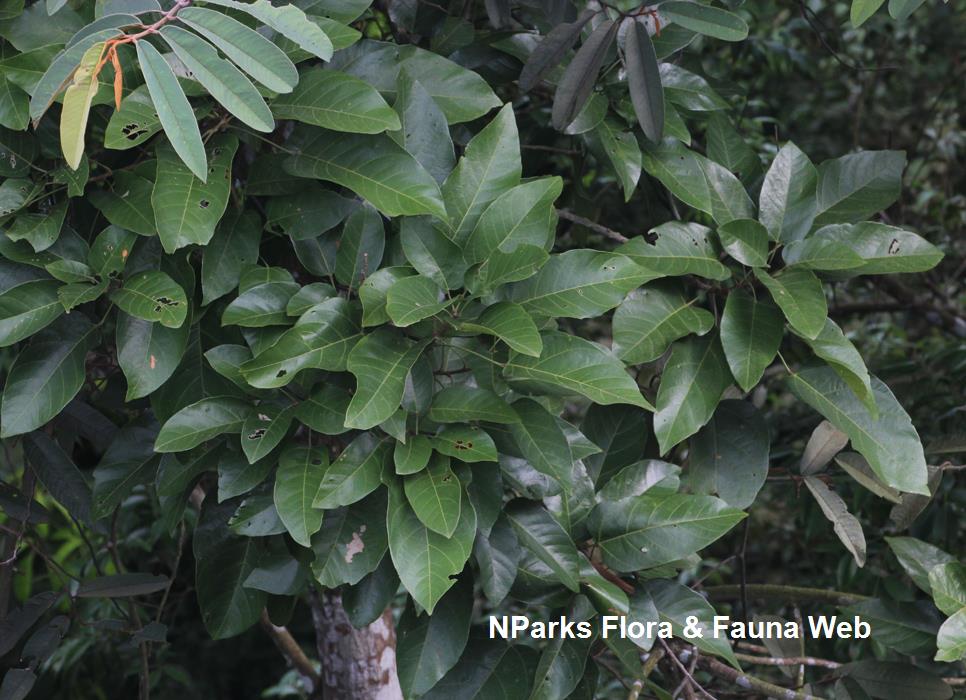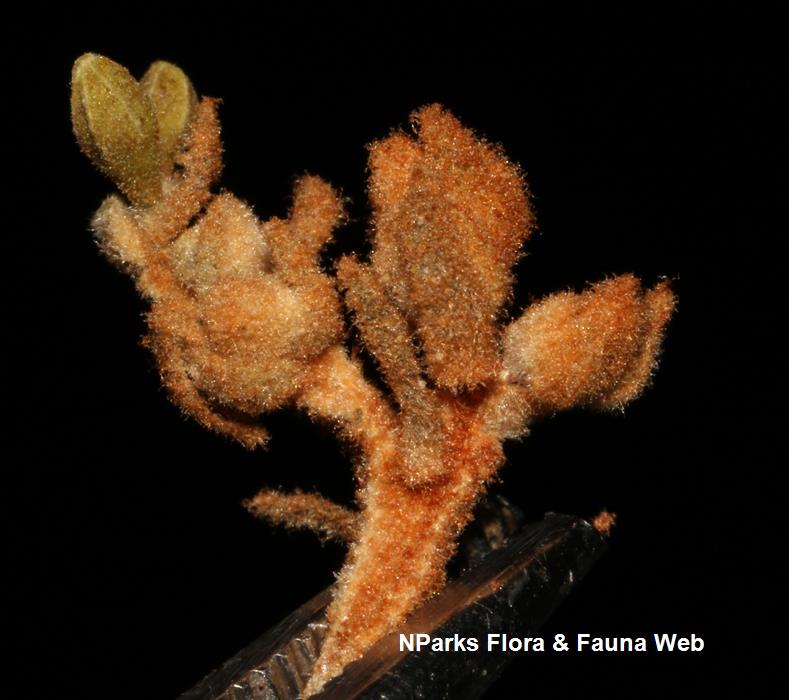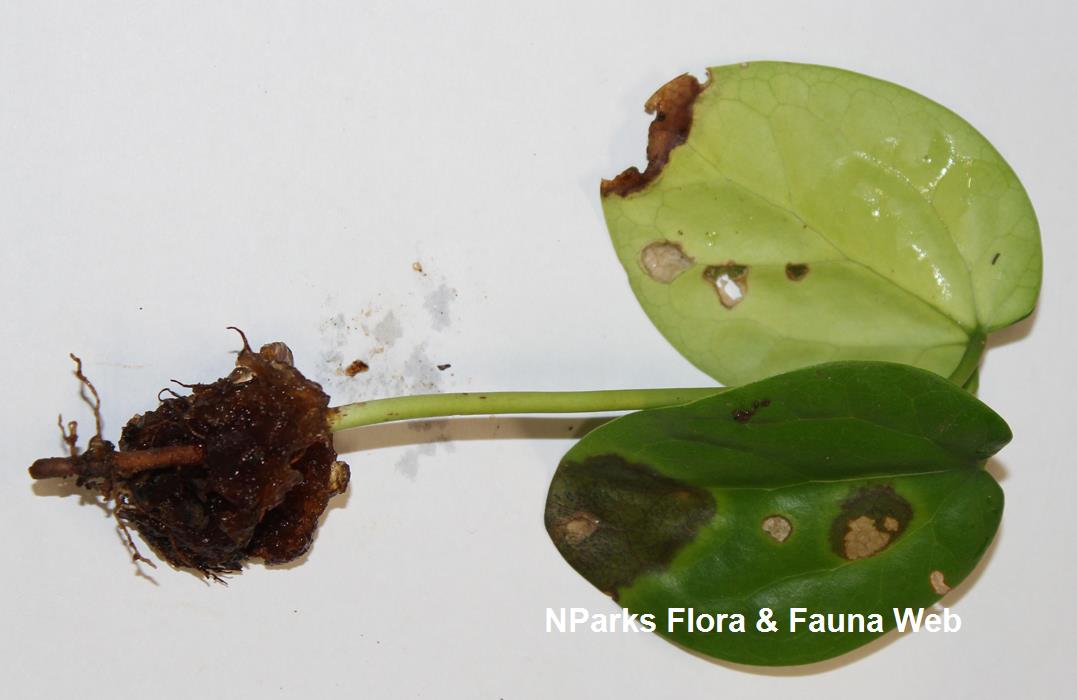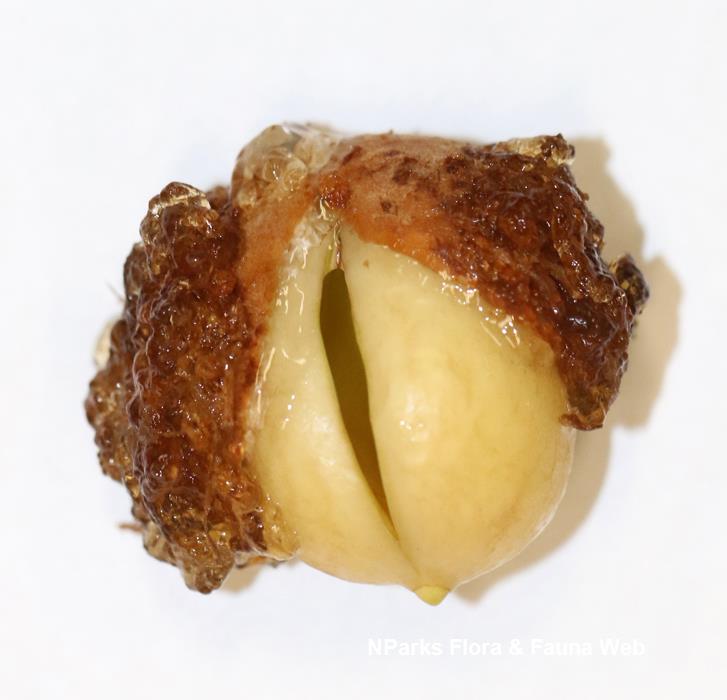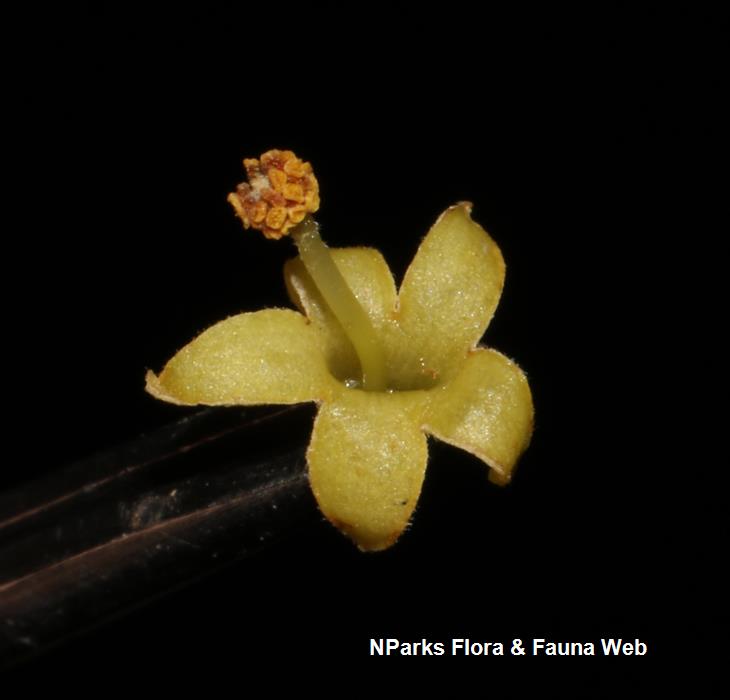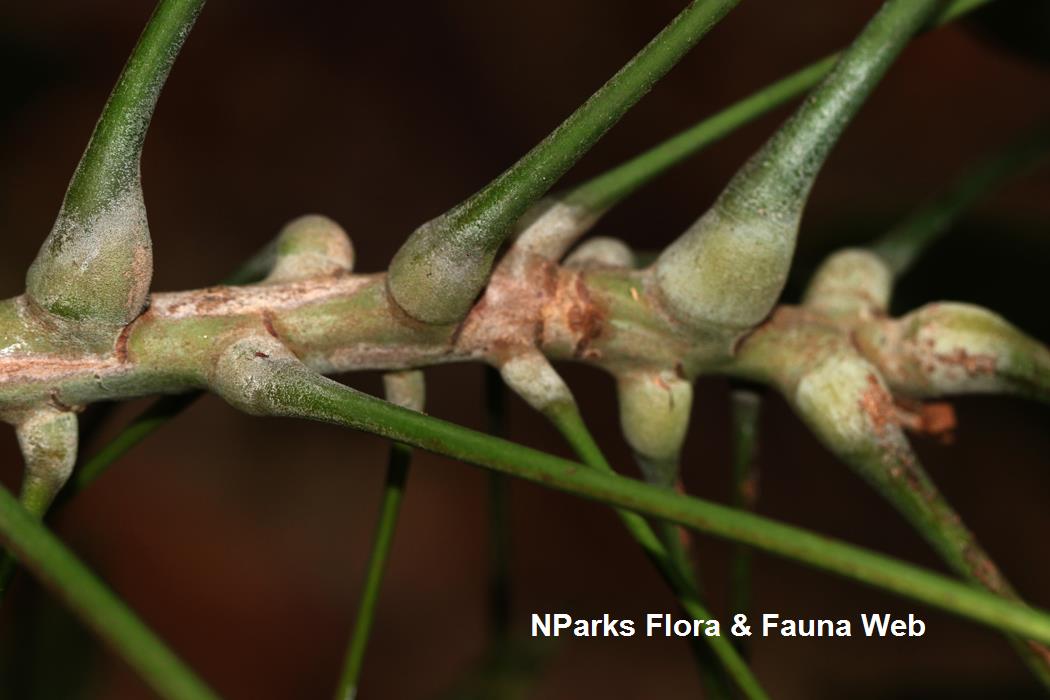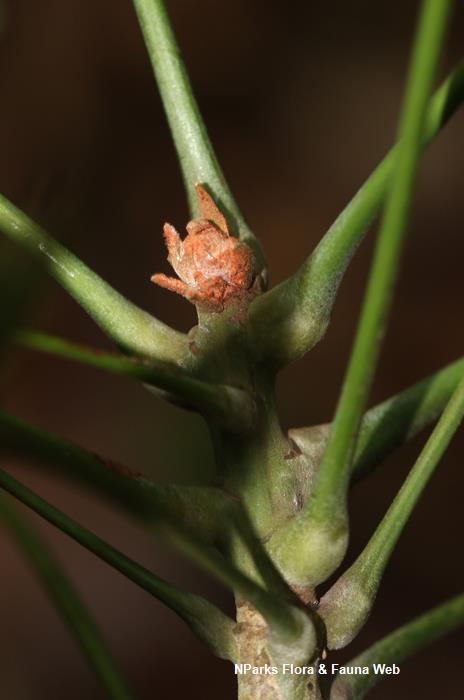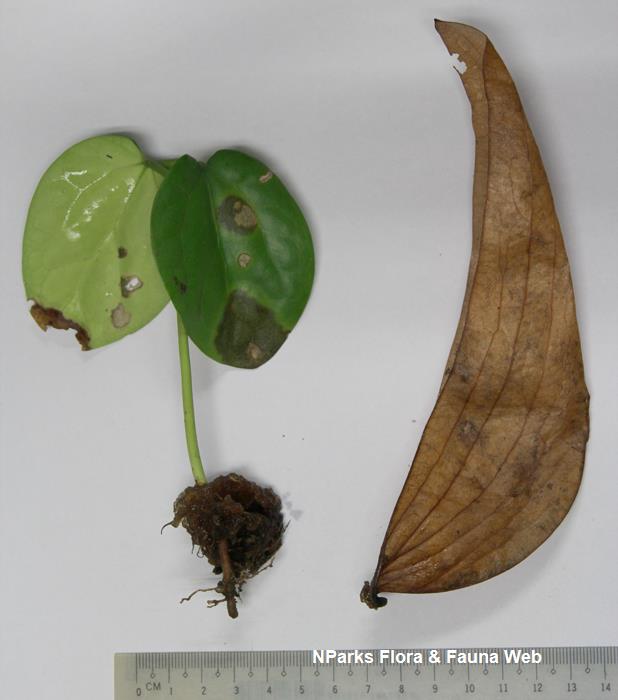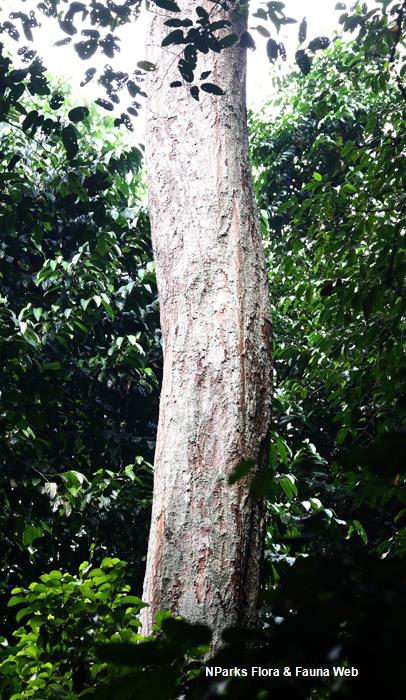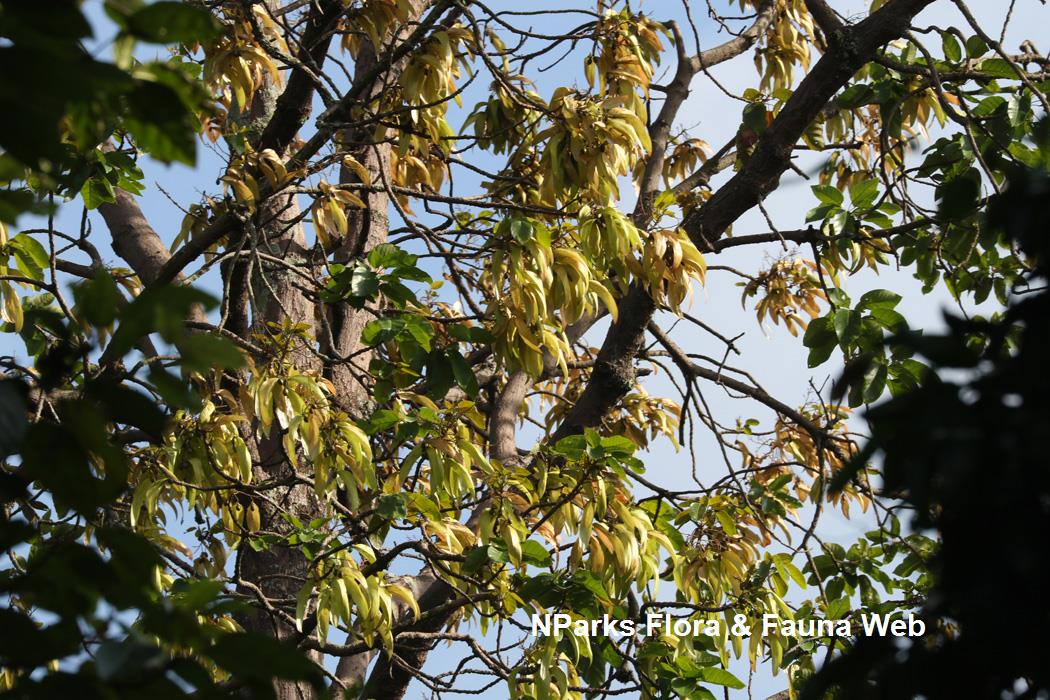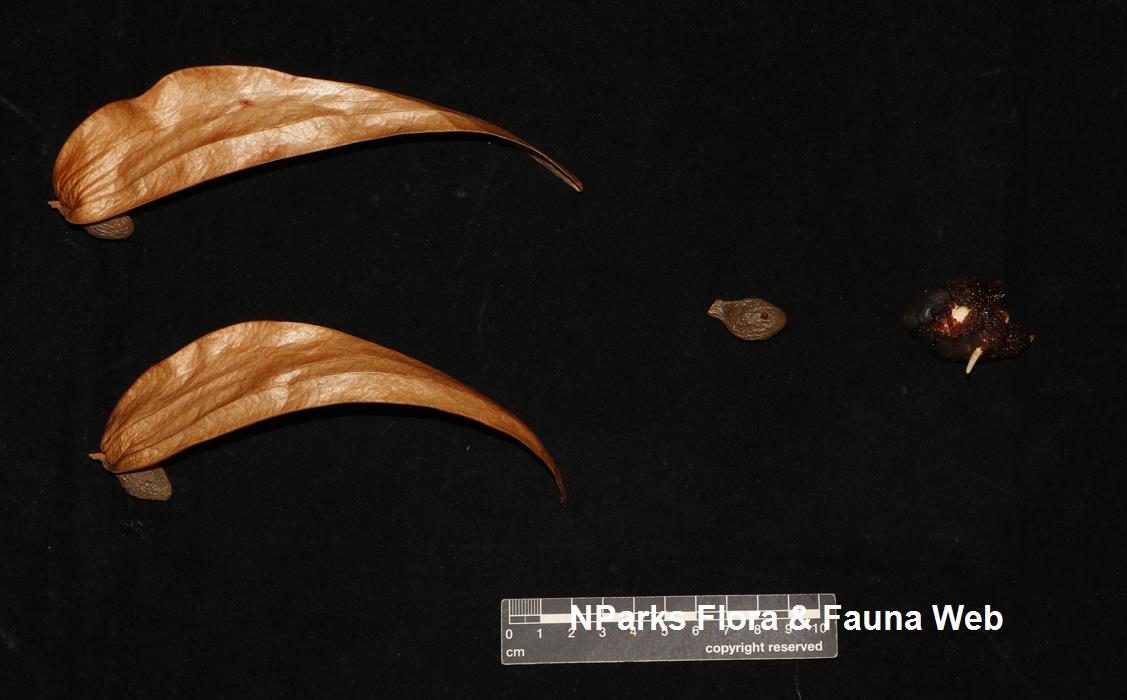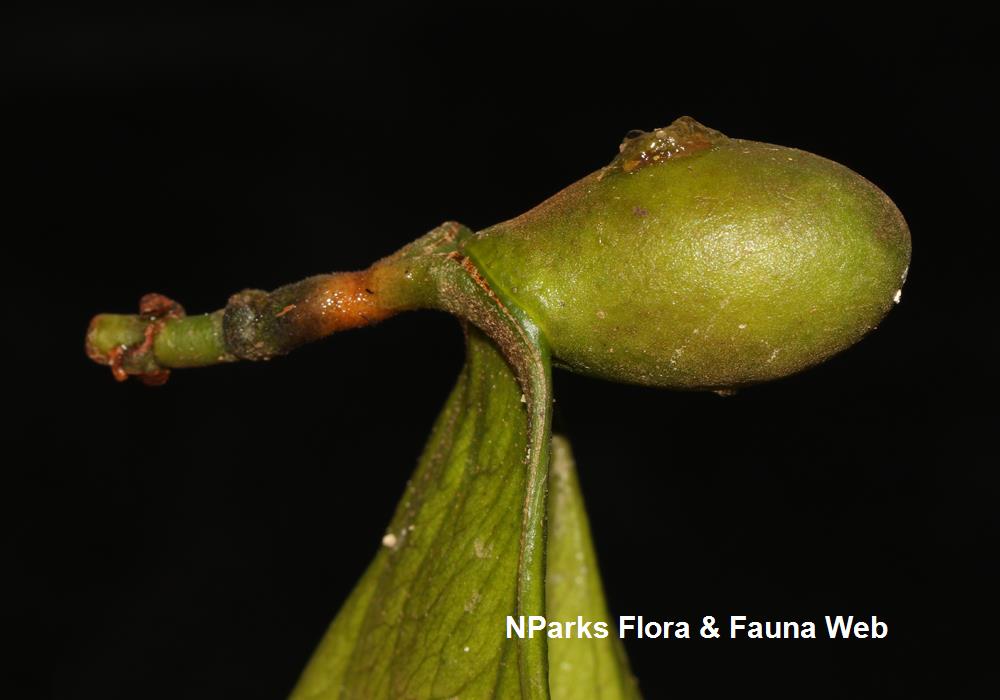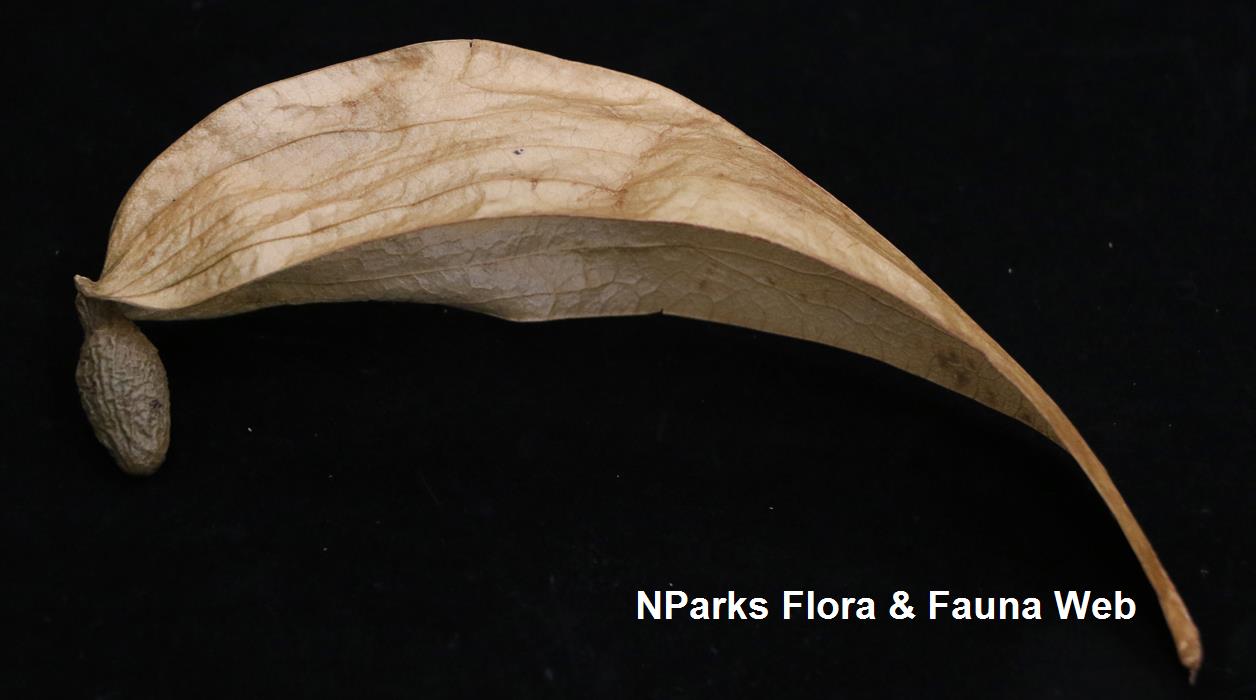
Name
Classifications and Characteristics
| Plant Division | Angiosperms (Flowering Seed Plants) (Dicotyledon) |
|---|---|
| Plant Growth Form | Tree (Big (>30m)) |
| Lifespan (in Singapore) | Perennial |
| Plant Shape | Irregular |
| Maximum Height | 45 m |
Biogeography
| Native Distribution | Thailand, Cambodia, Sumatra, Peninsular Malaysia, Singapore, and Borneo |
|---|---|
| Native Habitat | Terrestrial (Primary Rainforest, Mountain, Freshwater Swamp Forest) |
| Preferred Climate Zone | Tropical |
| Local Conservation Status | Native to Singapore (Endangered (EN)) |
Description and Ethnobotany
| Growth Form | It is a tree up to 45 m tall. |
|---|---|
| Foliage | Its alternate, stalked leaves have leathery leaf blades that are variable in shape, and 15-25 by 1-12 cm. The young trees have palmately-lobed leaves, and the number of leaf lobes decreases as the tree ages, such that adult trees have unlobed leaves in their crowns. |
| Flowers | Its flowers are white-yellow and about 5 mm wide. |
| Fruit | Its fruits are green-yellow-brown, about 20 cm long, and with boat-shaped wings. Its brownish seeds are ellipsoid, hairless, and 25 by 15 mm. |
| Habitat | It grows on well-drained hillsides, ridges, swamp forests, and sub-montane forests up to 1,200 m altitude. It occurs locally in Nee Soon Swamp Forest, in the vicinity of MacRitchie Reservoir, Bukit Timah Nature Reserve, and Pulau Ubin. |
| Associated Fauna | Its flowers are insect-pollinated. |
| Taxonomy | Previous name of Scaphium macropodum auct. non (Miq.) Beumée ex K.Heyne misused in Singapore. Current name of Scaphium affine (Mast.) Pierre is applicable to wild plants in Singapore but not necessarily to wild plants elsewhere or to cultivated plants originating elsewhere. |
| Cultivation | It can be propagated by seed. |
| Etymology | The genus 'Scaphium' come from the Greek skaphion, which means a small rowboat known as a skiff, referring to the shape of the fruit. |
| Ethnobotanical Uses | Edible Plant Parts : Edible Fruits, Edible Seeds Food (Fruit or Vegetable): The flesh of the fruit is soaked in water to obtain a jelly like texture and used in a local dessert. Medicinal: Its seeds are used to treat diarrhea, dysentery, and asthmatic ailments. Timber & Products: Its timber is used for making furniture. |
Landscaping Features
| Landscaping | It may be suitable for roadsides and parks. |
|---|---|
| Desirable Plant Features | Ornamental Foliage, Ornamental Fruits |
| Landscape Uses | Suitable for Roadsides, Parks & Gardens |
Fauna, Pollination and Dispersal
| Pollination Method(s) | Biotic (Fauna) |
|---|---|
| Seed or Spore Dispersal | Abiotic |
Plant Care and Propagation
| Light Preference | Full Sun, Semi-Shade |
|---|---|
| Water Preference | Lots of Water, Moderate Water |
| Plant Growth Rate | Moderate |
| Rootzone Tolerance | Moist Soils, Well-Drained Soils, Fertile Loamy Soils |
Foliar
| Foliage Retention | Evergreen |
|---|---|
| Mature Foliage Colour(s) | Green |
| Mature Foliage Texture(s) | Leathery |
| Foliar Type | Simple / Unifoliate |
| Foliar Arrangement Along Stem | Alternate, Spiral |
| Foliar Attachment to Stem | Petiolate |
| Foliar Shape(s) | Non-Palm Foliage |
| Foliar Venation | Pinnate / Net |
| Foliar Margin | Palmately Lobed |
| Leaf Area Index (LAI) for Green Plot Ratio | 3.0 (Tree - Intermediate Canopy) |
Floral (Angiosperm)
| Flower & Plant Sexuality | Bisexual Flowers |
| Flower Colour(s) | Cream / Off-White, White |
|---|---|
| Flower Grouping | Cluster / Inflorescence |
Fruit, Seed and Spore
| Mature Fruit Colour(s) | Brown |
|---|---|
| Fruit Classification | Simple Fruit |
Image Repository
Others
| Master ID | 1821 |
|---|---|
| Species ID | 3114 |
| Flora Disclaimer | The information in this website has been compiled from reliable sources, such as reference works on medicinal plants. It is not a substitute for medical advice or treatment and NParks does not purport to provide any medical advice. Readers should always consult his/her physician before using or consuming a plant for medicinal purposes. |


